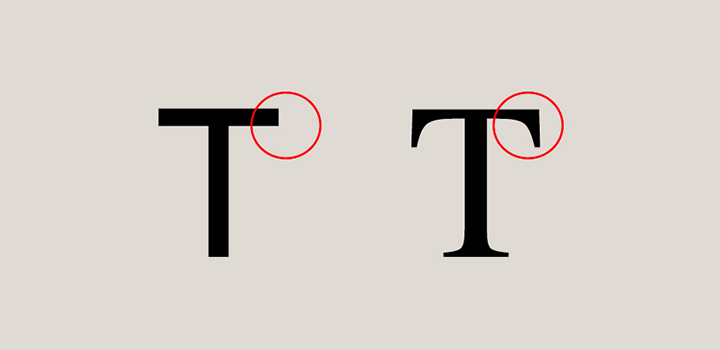Fonts are not something people tend to think much about. When was the last time you were reading through a document and found yourself admiring the font? I suspect it’s not a frequent experience. In the designer’s toolbox, typefaces may not get as much of the spotlight, but choosing the right one is of the most important decisions a designer can make.
Fonts, much like colours, evoke emotion. They tell a story that adds layers of context in a subtle but powerful way. The story they tell can be joyful, intellectual, traditional, modern, utilitarian… The possibilities are endless. And it’s critical to get it right.
Let’s take the simple example of serif and sans-serif fonts. As a general concept, serif fonts—those with the little tails on the top and bottom of letters—are seen as more traditional, as they have been in standard use since the invention of the Roman alphabet. Sans-serif fonts, on the other hand, were developed in the 1800s and only gained widespread use after World War II. As such, they are associated with a more modern aesthetic.

A brand that needs to convey a youthful message will likely want to use a sans-serif typeface. This is why it is important to first establish your brand persona. What is the appropriate tone and vibe of your brand? Does it fit with your products and services? Does it align with your guiding values? Does it help you stand out among competitors?
Fonts, much like colors, evoke emotion. They tell a story that adds layers of context.
Standing out may not actually be what you need. Perhaps you’re a new startup that just needs to establish itself and clearly communicate what it does. At this point in “design history,” fonts typically have roots that are associated with industries, religions, political viewpoints, etc. Choosing a font that is recognizable in a given space can help tell the world how to classify you.
Of course, aesthetics is not the only consideration worth giving. What separates good “design” from “art” is a special attention to functional requirements, and meeting them with such elegance that the end user is oblivious to the challenge. Obstacles a designer might face include…
- Legibility – Can the text be easily read, given size, spacing, device, and lighting? We cannot control every situation, but we can optimize for the most likely scenarios.
- Cross-platform cohesiveness – Will the same font work just as well when carried over from a website to the printed page, or from desktop to iPhone?
- Versatility – A good font will often have a variety of weights/thicknesses for variant purposes. This allows a designer to use different fonts in the same font “family” in order to create the best design for a given use, while retaining a consistent look and feel. In other cases, entirely different fonts can be used for different purposes within the typographic brand system (see Compatibility below).
- Cost – There are some fantastic and versatile fonts out there, and most of them cost money—sometimes hundreds of dollars. You can even commission a custom typeface, which is ideal for brands that need to fully own their identity. However, budgets sometimes require more resourcefulness.
- Compatability – Brands will often need multiple fonts. Perhaps there is one for the logo that doesn’t work well for headlines, or one used for headlines that doesn’t work well as body copy. Ensuring multiple fonts complement one another can be tricky. It is important, however, that each font has a distinct purpose and proper use guidelines.
For all of these reasons, I recommend testing font selections out on a variety of assets, use cases, and platforms before making a final selection. Just like your logo and colors, you don’t want to be changing fonts all the time.
Ultimately, a font is one more piece of the large puzzle that is your “brandscape” (though I don’t love that word, it fits). The goal is to use all of the elements within your brand—such as color palette, logo, patterns, imagery, etc.—to see what feels right and works well together as a flexible system. It is about consistently applying coherent set of ideas that, when brought together, creates a single persona.